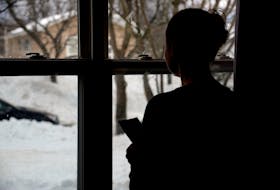As the province and school boards discuss the challenges of back to school during the COVID-19 pandemic, some educators are advocating for more classes to be taught outside.
The Child and Nature Alliance of Canada, which advocates for outdoor-based learning such as forest schools, says not only is it easier to social distance outside but children have reduced stress when they are connected to their environment.
Heather Wilson, the alliance’s director of operations, says since the spring when the pandemic hit Canada they have received a lot of interest from educators across the country asking how can they meet the curriculum through outdoor learning and how to do it safely.
In response to the demand, the alliance and its educational arm Forest School Canada, have a developed a new free online resource hub, which will be launched at the end of August, called Thrive Outside for educators to support nature based learning and play for children.
Holding classes outside in the snow or rain can be challenging, especially if some students don’t have access to appropriate clothing for cold or wet weather, but Wilson said she believes “it is absolutely possible.”
Forest and nature schools are a growing movement in Canada and around the world. They exist as part-time programs or full-time curriculum and the students spend most of their day – if not all – learning outside. There are at least 15 forest or nature schools in B.C., according to the alliance website.
Wilson said they can take place anywhere, and it is very much a philosophy than just children learning in an actual forest.
“A playground or school yard is enough. When children are learning outside they can be connected to their immediate environment,” she said.
Rather than make recommendations the alliance provides a guide for educators to incorporate more outdoor class time so they can work out what is best for their particular class, she said.
The Thrive Outside resource will also provide a risk benefit assessment to help teachers figure out what works with their geographical location.
“It’s a step by step so they feel confident in taking kids outside,” said Wilson, adding that while they have not been in discussion with the B.C. government specifically about incorporating more outdoor classes, they are open to the idea.
She added that she expects to have more dialogue after their resource hub launches in late August.
The B.C. Ministry of Education says its pandemic back to school working groups have discussed different strategies that encourage physical distancing and one of them is taking students outside more often.
“This could involve organizing learning activities outside including snack time, place-based learning and other unstructured time,” said ministry spokesperson Craig Sorochan, in an email Friday.
“Classes such as gym and activities that involve movement happen outside and playgrounds are also a safe environment with appropriate hand hygiene practices before and after usage.”
Teachers were taking classes outside in June when school reopened and this practice was recognised as an option, he added.
Wilson said going back to school will be stressful for many students and teachers, and she believes more outdoor time will help reduce some of that stress.
“It will help with the social distancing aspect because when they are outside generally they have more space,” she said. “When they have the freedom to be outside it helps them to process everything that has happened in the last few months.”
Most forest schools are independently run, but some are in partnership with school boards.
“We really feel for educators right now, and how overwhelmed they must be feeling right now, and it’s our desire to help them feel supported in navigating the pandemic, so that’s really why we developed Thrive Outside because it’s challenging if you are not used to getting children to learn outside,” said Wilson.
Marina Milner-Bolotin, a science professor at the University of British Columbia, says she support more learning outside, and said science is a good example of a subject that works well in nature.
“As a science educator, I think you can learn outdoors. I love it. All the kids have apps and they can measure things, record, or photograph amazing things in nature. There are incredible opportunities here.”
However, Milner-Bolotin said outdoor learning is only be part of the solution, and she would like to see more of a behavioural change with kids learning more about how to protect each other from getting sick.
She pointed to the example of Taiwan, where they have had a low coronavirus infection rate. She noted the kids all wear masks in schools, and are taught to take precautions such as consistent hand washing to protect their family members and those with compromised immune systems.
Copyright Postmedia Network Inc., 2020








